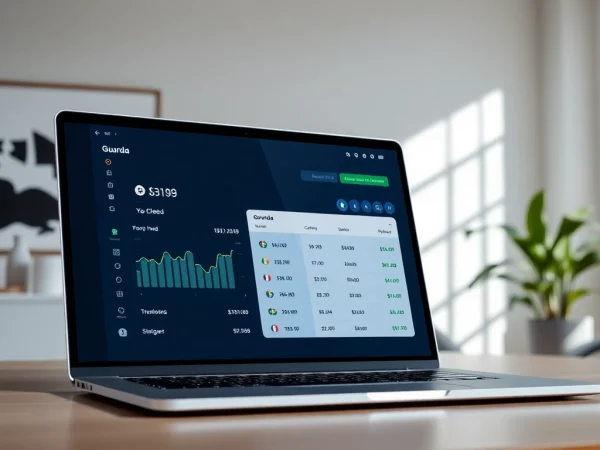Crafting an Effective Debt Payoff Planner for Financial Freedom
Understanding the Importance of a Debt Payoff Planner
A debt payoff planner is a financial tool specifically designed to assist individuals in managing their debts effectively. With the increasing complexity of financial obligations today, having a structured method to tackle debt has become essential for ensuring long-term financial health. By utilizing a debt payoff planner, individuals can navigate their financial landscape more efficiently and methodically.
Defining a debt payoff planner
A debt payoff planner is essentially a comprehensive roadmap that outlines an individual’s debts, repayment strategies, and financial goals. It serves as a tangible reference point that allows users to visualize their debt situation, strategize payment plans, and monitor progress. The planner could be a simple spreadsheet, a dedicated app, or a downloadable template that organizes all relevant financial data in one convenient place.
The role of debt payoff planners in financial health
Debt payoff planners play a pivotal role in maintaining financial health. They provide clarity and organization, allowing users to see the bigger picture of their financial status. By effectively managing debt, individuals are more empowered to make informed decisions fast, reduce stress related to money issues, and ultimately achieve financial stability. With a clear strategy in place, users are less likely to fall back into debt.
Common challenges faced without a planner
Managing debt without a structured plan can lead to numerous challenges, including missed payments, accruing interest, and a poor understanding of one’s overall financial landscape. Many individuals struggle to prioritize payments on higher-interest debts, leading to longer repayment periods and increased financial strain. Additionally, the emotional burden of dealing with bills and financial uncertainty can lead to frustration and anxiety, which only exacerbates the problem further.
Components of an Effective Debt Payoff Planner
An effective debt payoff planner should have several key components that work together to guide users on their journey toward becoming debt-free.
Key elements to include
- Debt Inventory: A comprehensive list of all debts including amounts, interest rates, and due dates.
- Payment Schedules: Clearly defined timelines for payment frequencies, whether monthly or bi-weekly.
- Debt Snowball Method: Optionally, an approach whereby users pay off smaller debts first to build momentum.
- Budget Tracker: A section to monitor both income and expenditures to identify areas for cutbacks that can assist in accelerated payments.
Choosing the right format for your planner
The format of a debt payoff planner can vary greatly depending on personal preferences and lifestyle. For some, a digital app may provide the convenience and automation needed, while others may prefer a physical planner where they can manually jot down notes and payments. Whichever format is chosen, it is vital that the planner be user-friendly and regularly updated to encourage consistent engagement.
Tools and resources for building your planner
Numerous tools exist for building a customized debt payoff planner. Spreadsheets like Microsoft Excel or Google Sheets offer flexibility and functionality for those who enjoy data-driven methods. Dedicated apps designed specifically for debt tracking and budgeting provide reminders and insights that can make the process easier. Additionally, many personal finance websites offer free templates that can be tailored to individual needs.
Steps to Create Your Own Debt Payoff Planner
Creating a debt payoff planner is not just about listing debts; it involves setting actionable goals and strategies for repayment as well. Here are some essential steps to get started.
Setting realistic financial goals
The very first step in creating an effective debt payoff planner is to set clear, realistic financial goals. This could involve assessing your current financial situation, establishing a timeline for becoming debt-free, or determining how much surplus income can be allocated toward debt repayments. By setting specific, measurable goals, users can maintain motivation as they track progress over time.
Identifying and listing all debts
Next, it’s crucial to create an exhaustive list of all debts. This list should include various types of debt, such as credit cards, personal loans, and student loans, along with their corresponding balances, interest rates, and payment due dates. The act of writing down all debts can provide clarity and a sense of urgency to tackle payments.
Choosing a repayment strategy
With a comprehensive list of debts in hand, the next step is to choose a repayment strategy. Common methods include the Debt Snowball technique, where individuals start by paying off the smallest debt first, and the Debt Avalanche method, which focuses on paying off debts with the highest interest rates first. Both methods have their merits, and the best choice will depend on the individual’s psychological motivations and overall financial goals.
Monitoring Progress with Your Debt Payoff Planner
Once the debt payoff planner is in place, continuous monitoring is key to maintaining momentum and ensuring that the repayment strategy remains effective over time.
How to track payments and adjustments
Establishing a tracking system is essential for updating the planner as payments are made. This can include recording payments made towards each debt, updating outstanding balances, and making necessary adjustments to the repayment schedule. Regularly checking in on your debts can also highlight patterns and encourage modifications to the payment strategy as needed.
Setting milestones and celebrating achievements
Setting milestones within the planner can create a sense of accomplishment and motivate users to continue with their payment strategy. Celebrating these achievements, whether big or small, encourages persistence in the journey toward financial freedom. Milestones could include paying off a specific debt or reaching a particular percentage of total debt repayment.
Adjusting your planner as life changes
Life is unpredictable, and changes such as job loss, unexpected expenses, or changes in income may require adjustments to your debt payoff planner. Regularly review your plan to ensure it aligns with your current financial situation. Adapting your strategy is part of being proactive and maintaining control over your financial future.
Real-Life Success Stories Using Debt Payoff Planners
The impact of using a debt payoff planner is often best illustrated through real-life success stories. These inspiring narratives highlight the effectiveness of structured planning and the positive outcomes achievable through commitment and effort.
Case studies illustrating effective debt management
Many individuals have successfully navigated their way out of debt using planners. Case studies demonstrate how specific strategies—like focusing on high-interest debts first—have allowed people to reduce their debts more quickly. By implementing systematic approaches, these individuals transformed what once seemed impossible into palpable milestones of success.
Testimonials from users of debt payoff planners
User testimonials shed light on the personal experiences of those who’ve committed to a debt payoff planner. Many share how setting financial goals helped them diminish their debt stress, and successfully stick to their budgets. Common themes within these testimonials include an increase in financial literacy, newfound confidence in managing finances, and the satisfaction derived from reaching personal financial goals.
Lessons learned and best practices shared
Through various success stories, several best practices emerge as fundamental to effective debt management. The importance of engagement, consistency in tracking progress, and the adaptability of strategies to personal life situations top the list. Many who have successfully repaid their debts recommend forming a support network or joining online community platforms to share insights and stay motivated.









